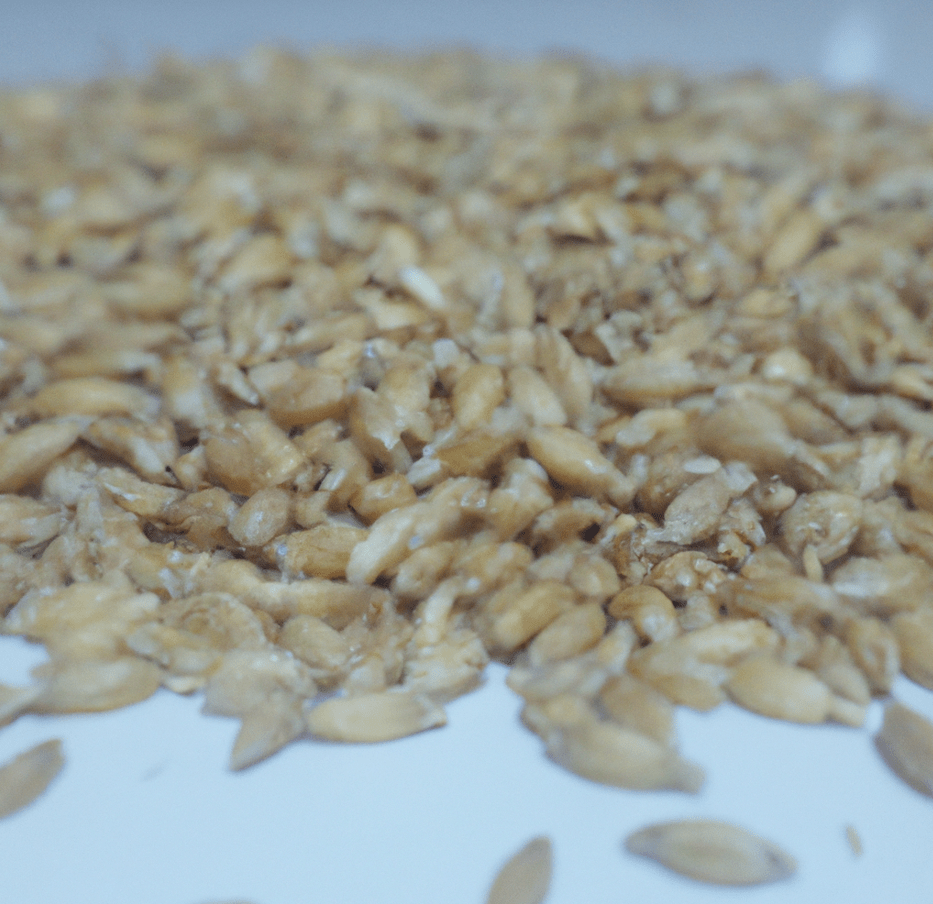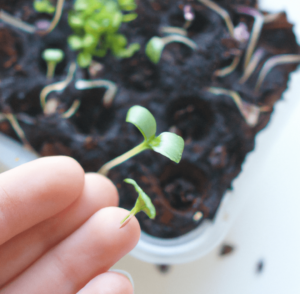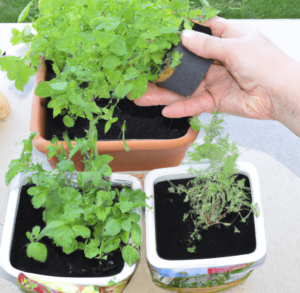Replacing dead grass with new, lush grass seed can truly enhance the overall appeal of your garden. No garden is truly complete without a green lawn and you can learn more about gardening guides with us including the purpose of mulching, the best shade plants and grass, and the different potting soil or potting mix for grass seed.
In this article, we will discuss how to plant grass seeds and everything involved in the process.

Things to Know Before Planting Grass Seed
The following are a few basic tips to know for newly planted grass seed:
- Sowing grass seed requires nutrient-rich, healthy soil. Learn how to make the best compost for your grass. Before you plant grass seed, it is good to perform a soil test and make any changes necessary to start planting grass seed.
- Keep in mind that before grass seed germination, you cannot control weeds. For this reason, avoid any weed preventing chemicals, be it liquid or in any other form. These chemicals are notorious for killing immature grass seedlings.
Choosing the Best Grass Seed for Your Home
The first step is to identify the right type of grass or turf already growing in your garden. If this is a new piece of land without grass, then simply pick a type that is suitable to grow in that region and always keep in mind the specific requirements of your lawn.
Different grass seeds require different levels of care and each is unique in its hardiness, resilience, light tolerance, resistance to hot climate and drought, etc. Most turf grasses are either cool season grass or warm season grass. The type you need depends entirely on where you live and the climate of the location.

Warm Season Grasses
When it comes to warm season grasses, there are five main types: Bermuda, St. Augustine, Zoysia, Bahia, and centipede. Since these types have stronger heat tolerance, here are some facts about growing them:
- This type of turf grass should be planted sometime between March and September, depending on the weather conditions.
- They thrive in warmer climates and mild winters.
- Warm season grasses grow exponentially during summer months and become flat and dormant during winters.
- They require less moisture than cool-season grass types, which makes them more resistant to droughts.
- Their blades are wider and coarser.
- When mowing, this type of grass should be mowed all the way to its base and close to the ground.
- These are also usually creeping varieties of grass.

Cool Season Grasses
The four most common varieties of cool season grasses include fine fescue, tall fescue, Kentucky bluegrass, and ryegrass. To get the most out of your cool season grasses, keep these facts in mind:
- These are usually planted and seeded between the middle of August and October, depending on the climate in your location.
- They thrive and bloom in below freezing temperatures.
- Their growing period is between spring and fall.
- This type of grass becomes dormant during summertime.
- It consists of long and fine blades.
- These are also maintained at a higher mowing level.

How to Seed a New Lawn
If this is the first time you are seeding an empty piece of land, then the process is a bit different than when seeding an existing lawn.
Firstly, seeding is the simplest and the most common method of planting turfgrass. Some basic principles of this are the same, whether this is a new lawn or an existing one. Below are some general steps for seeding a lawn but keep in mind that different types will have different care instructions.
Step 1: Prepare the Soil
Firstly, you need to prepare the ground for planting grass seed. Dig 3 inches deep in the ground and use a rake to smooth over the surface. Add contours and dips for drainage.
Step 2: Introduce Food and Nutrients
Once the hole has been dug, you can now add topsoil paired with compost and fertilizer and use a rake or a hoe to work these into the soil.
Step 3: Sow Grass Seed
Read the package of your grass seed and spread it onto the soil at the rate indicated on the label. You can sow half in both directions and create a cross pattern to ensure an even coverage.
Step 4: Protect the Grass Seed
Next, use a rake or a hoe to cover grass seed with soil and begin mulching with a weed-free organic straw like wheat straw to prevent the seed from blowing away with wind or rain.
Step 5: Hydrate the Grass Seed
A crucial step in creating a healthy lawn is by watering your grass seed and keeping it fully hydrated once a day. Reduce the times you water your grass seed to once a day when the grass sprouts up to an inch.
Step 6: Mow Grass and Keep Weed Growth under control
Once it reaches 2-3 inches in length, you can mow the grass and after doing it thrice, remember to water it and apply crabgrass control to eliminate crabgrass and weed growth.

How to Plant Grass Seed in an Existing Lawn
If you notice bald spots or burnt patches in the existing turf and wish to renew it, then follow these steps:
Step 1: Prepare the Existing Grass for New Grass
Start by mowing the existing lawn grasses smaller than usual and use a rake to thin it out completely.
Step 2: Prepare the Soil to Plant Grass Seed
Start by aerating to reduce any compacted soil and then pour in starter fertilizer with compost to give your soil the necessary nutrients it needs.
Step 3: Plant Grass Seed
Begin spreading the grass seed at the overseeding rate as indicated on the label and then use the rake to lightly cover them with the soil.
Step 4: Protect the Grass Seeds
Now cover grass seed with peat moss or homemade compost, along with mulch.
How to Repair Lawn with New Grass Seed
If you notice dead and dry patches in your existing grass, then the following steps can help you repair your lawn effectively:
Step 1: Prepare the Ground for New Grass Seed
Before you add new grass seed, check thoroughly for the root of the damage. If there is a pest infestation of an animal that lurks about and distresses your lawn, then you will have to deal with that first. Then you can remove the old, brown grass and loosen the soil to plant grass seed.
Step 2: Spread New Grass Seed
Next, you can spread and plant grass seed with a hand spread and rake the soil over them gently to keep them from flying away. Mulch carefully with a weed-free straw.
Tips on Watering New and Existing Lawns
Newly seeded lawns must always be kept moist. You can lightly water them periodically for the seeds to germinate. Don’t saturate or over-hydrate the seeds as this may cause them to rot instead. Once the grass has grown up to an inch, you can water it once a day.
Keep the following steps in mind once your grass has fully established:
- Always water your grass in the early hours as the lack of wind minimizes any chances of disease or water evaporation. In case your lawn shows signs of dehydration, then water it without delay but avoid using sprinklers on a windy day.
- Try not to water your lawn on a strict every day schedule. Instead, water your grass irregularly as this is akin to natural weather patterns and also trains your grass to resist against hotter weathers.
- When you water your grass, allow it to dry in between intervals as it helps nourish the roots and also promotes growth.
- If you wish to increase your soil’s water absorption, then simply aerate it and remove lawn thatch.
- Keep a close eye on spots that are more prone to sunburning or erosion.

Frequently Asked Questions
Will grass seed grow if I just throw it down?
Yes, grass seeds will grow if you simply throw it on the ground or the soil. However, the success of its germination is low and different to when you follow the process and do it right with preparation and the correct sowing technique.
What happens if I use too much grass seed?
If you add too much grass seed then this may result in overgrowth and a competition for resources such as light, nutrients, water, etc. This may eventually lead the seedlings to suffer and most of them to wither away.
What comes first, fertilizer or grass seed?
The fertilizer comes before the seeding.
Should I mix grass seed with topsoil when overseeding?
Yes, you should mix grass seed with topsoil when overseeding especially for small areas and other applications as well.







